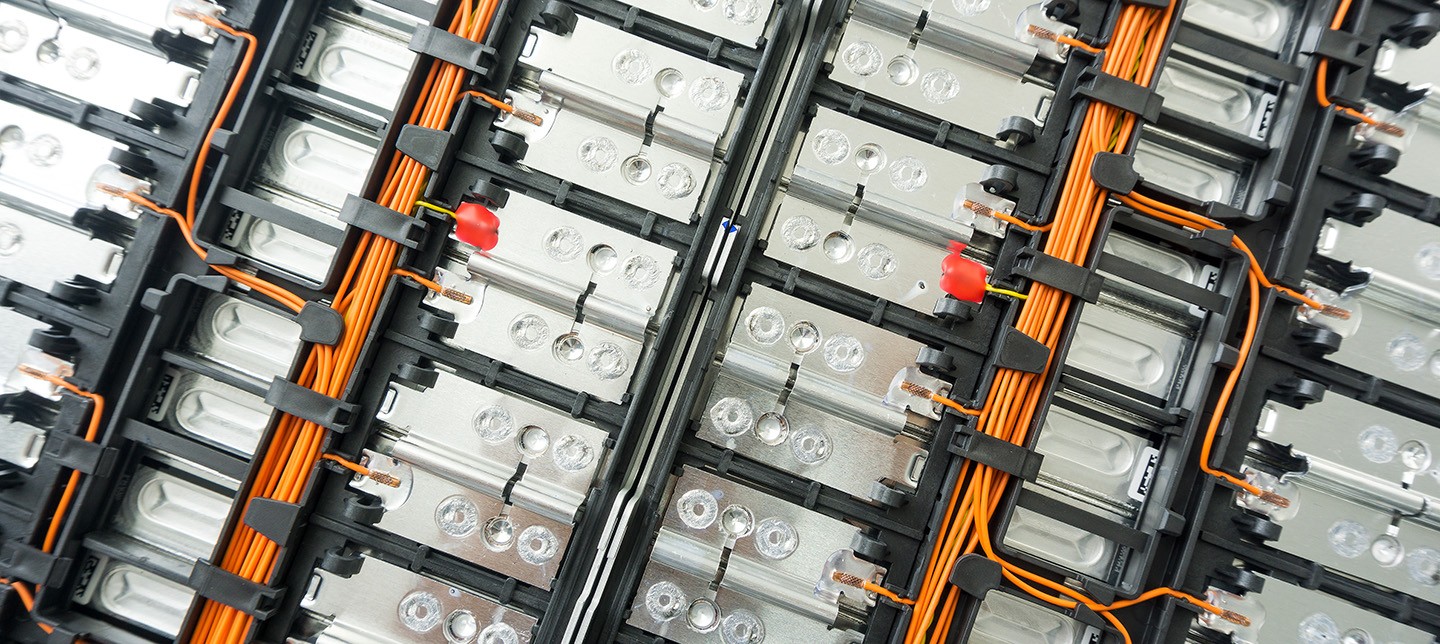
Considering EVs? Consider Them Faster.
NI’s test solutions help EV automakers meet production targets, maximize quality and performance, minimize risks of delays or recalls, and deliver innovation to the road faster.
From Friday, April 19th (11:00 PM CDT) through Saturday, April 20th (2:00 PM CDT), 2024, ni.com will undergo system upgrades that may result in temporary service interruption.
We appreciate your patience as we improve our online experience.

Electric vehicles (EVs) have disrupted the automotive market and the way that cars are tested. EV batteries demand more than just iterative optimization; they require innovation across multiple dimensions for which there is no playbook or established best practices. Today, we’re talking about how the industry can meet aggressive EV goals with Ben Wrightsman, president and CEO of the Battery Innovation Center (BIC) in Newberry, Indiana, USA, and his team members, Danny Marshall, test and evaluation team leader; Bill Walter, operations manager; and Rodney Kidd, junior lab technician.
Jeffrey Phillips, Director, Solutions Marketing, Transportation, NI
BEN WRIGHTSMAN: The BIC fills a unique, multifaceted role in the energy storage ecosystem. As a nonprofit, it was created to facilitate the rapid development, testing, and commercialization of safe and reliable systems in the energy storage industry. Our advanced cell fabrication, test, and evaluation; R&D; accredited training; short courses; and technical advising teams provide a wide range of capabilities with expert feedback to help the industry move forward.
We do this by connecting commercial, academic, and government agencies to share facilities, equipment, and technical advice to catalyze advanced battery innovation while reducing cost and shortening the development and commercialization cycle. The BIC has become a trusted partner for those embracing new or experimental energy storage challenges, whether they’re a new startup or an industry stalwart.
Ben Wrightsman, BIC
DANNY MARSHALL: We can perform standard testing as a service (TaaS), but our mission is to evaluate why something might have “failed” or to what degree it “passed” and transfer those learnings as targeted design feedback. This process allows our partner companies to self-sustain in the long term instead of continuing to rely on third parties. We have a unique and capable array of infrastructure on-site such as large dry rooms, bi-directional power supplies, and an explosive-rated bunker that we affectionately call the “boom room.”
Our expertise and network are critical to facilitating this dynamic. Small business and startups aren’t the only ones who need training and education in safety standards for high-voltage propagation, mitigation, and overall best practices. Established OEM leaders need it, too.

Danny Marshall, BIC
BEN WRIGHTSMAN: Synchronizing and integrating enterprise data is key, and will provide an intuitive data interpretation and visualization framework. Fast and consistent data streams are instrumental to understanding the “why” of a test, and this information trickles down to the design of a pack. Because the underlying technology is evolving so quickly, this data may need to be interpreted in unplanned ways based on the results. This time-intensive step can compromise the time-to-market requirements.
DANNY MARSHALL: The integrated hardware and software systems being evaluated by those in the battery space will enable reliability, flexibility, and extensibility from a testing perspective. Reliability is one of the elements missing from other systems. NI has a great mechanism for developing not only tests but also test stands. Having a demo center for this capability at the BIC allows the evaluation of validation to occur at a low cost, which facilitates wider access to the industry.
BILL WALTER: The lack of a consistent data collection paradigm is a common problem with other systems. The applications used are usually a one-off piece of hardware/software combined to create a one-time high cost per test, and then they’re not applicable for any other test setup. NI has introduced a better standard that is cost-effective for several applications with data collection streams as a main focus.
RODNEY KIDD: NI equipment drivers enable plug-and-play interoperability with several different makes and models of standard testing equipment. These system improvements are on a “try it before you buy it” demo basis and are highly cost-effective. Time to market is reduced for future developments with more cost-effective equipment, consistent data points, and a centralized collection area to harness the value of data. Finally, enterprise data integration enables fast and accurate communication among all instrumentation across the laboratory today and throughout multiple laboratories around the world in the near future.
The EV revolution is pervasive, spanning not just automotive but also many adjacent markets. Government committees, standards bodies, industry consortia, academic research organizations, and even nonprofits designed to accelerate the path forward are all working together to reach Vision Zero faster. There is a better path; let NI and the BIC show you how.
Rodney Kidd, BIC